The difference between long-tail and short-tail keywords comes down to popularity. Many people search for short-tail keywords, while few search for long-tail keywords.
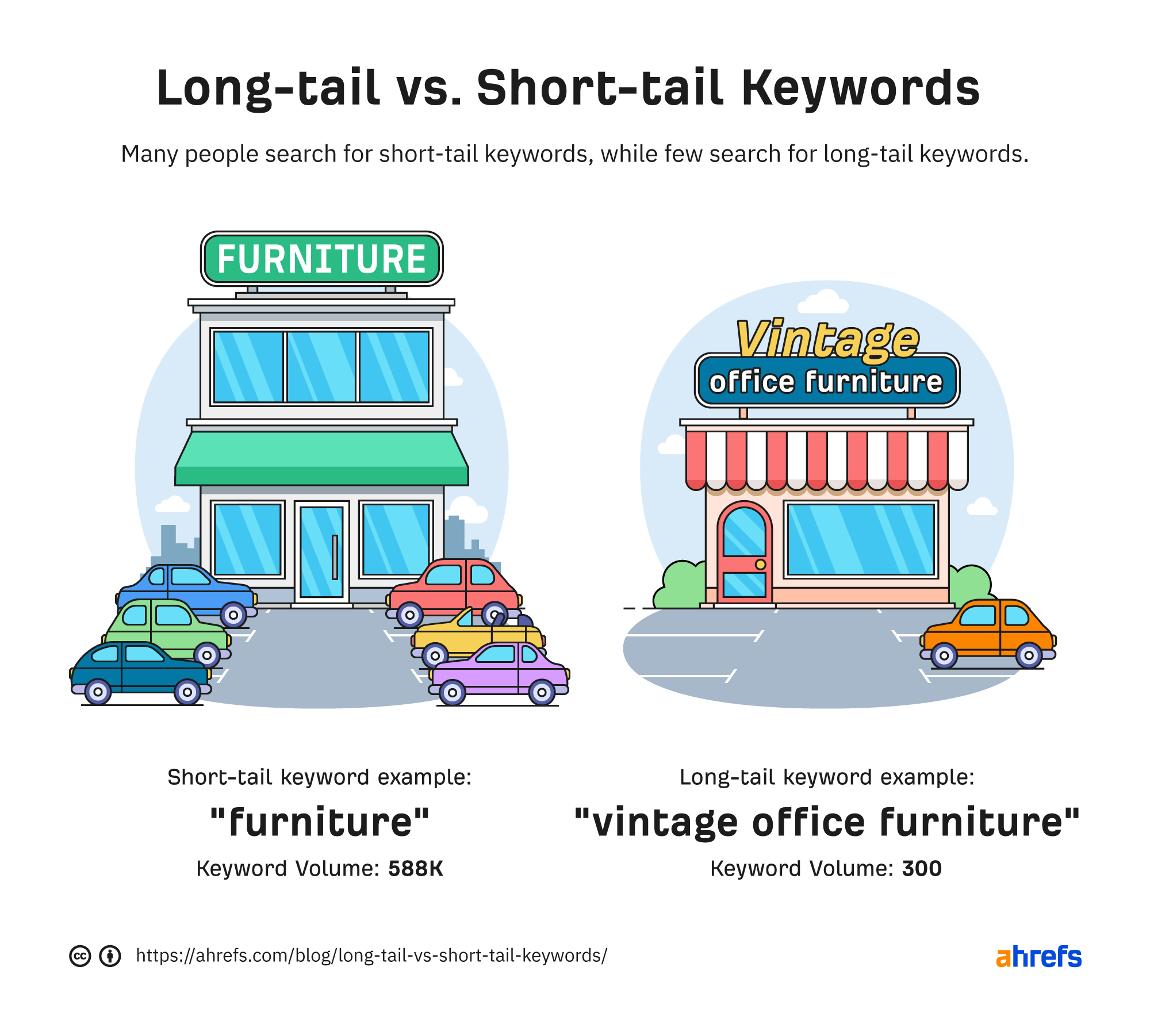
Because of that, long-tail keywords are generally easier to rank for and tend to attract searchers with more specific intent. This has made targeting them a widely adopted SEO tactic.
So should you follow suit and prioritize long-tail keywords at all times?
It’s not about how many words they contain or how specific they are.
Short- and long-tail keywords got their respective names from the position on the “search demand” curve.
If we take all search queries that people have performed in Google in the course of a month and order them by their search volumes, it’ll look somewhat like this:
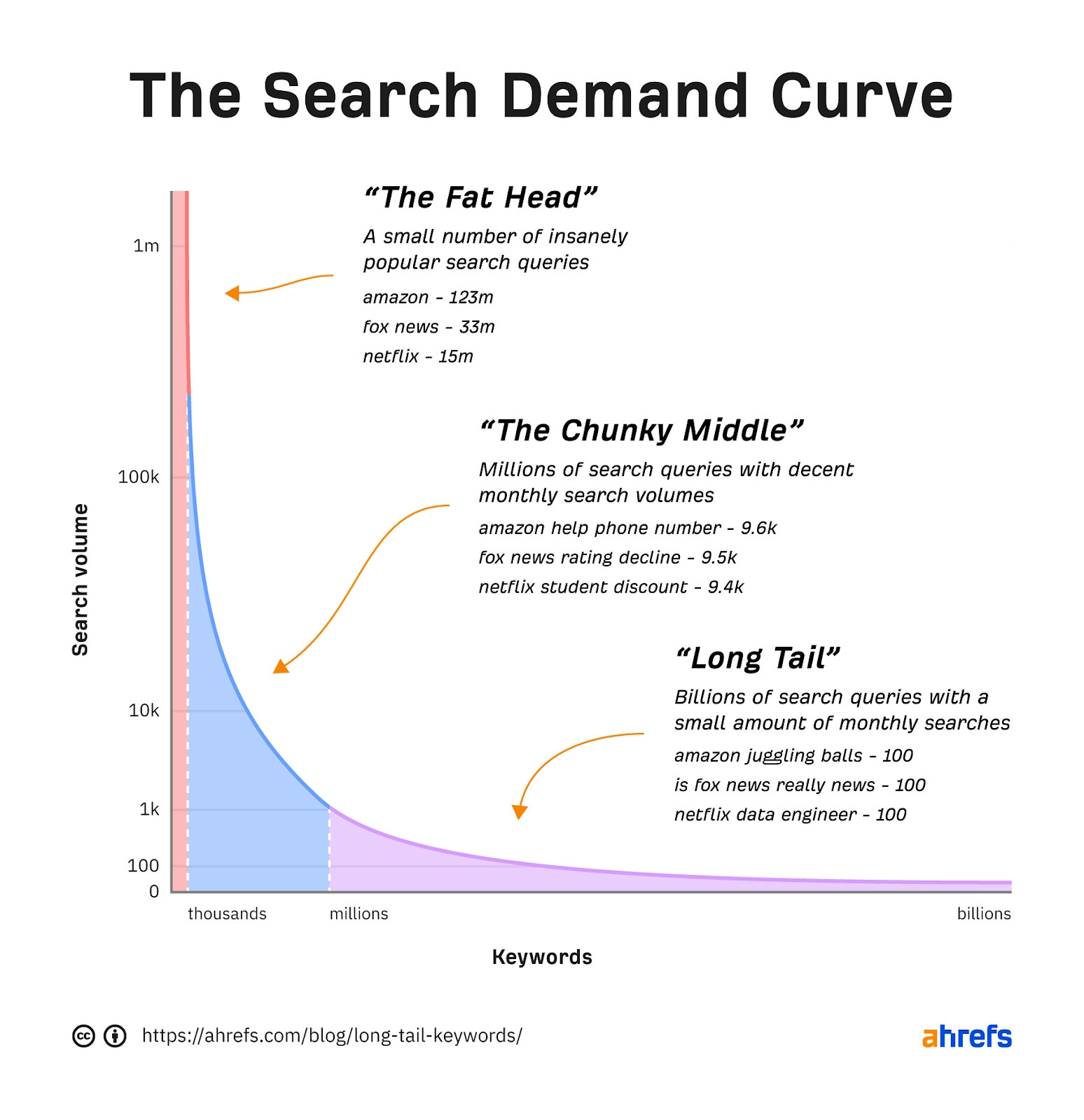
As you can see, long-tail keywords are literally in the “long tail” of this graph. It’s because they are less popular (but not “worse”) variations of the short-tail keywords/head terms on the “fat head” of the curve.
By the way, there are two types of long-tail keywords you should know.
Supporting long-tail keywords
Supporting long-tail keywords are less popular variations of more popular search queries. They are basically broader topics in disguise.
To illustrate, while some people will search for “bedroom furniture chests”…

… the majority of people will look for the same thing using simply “dressers”:
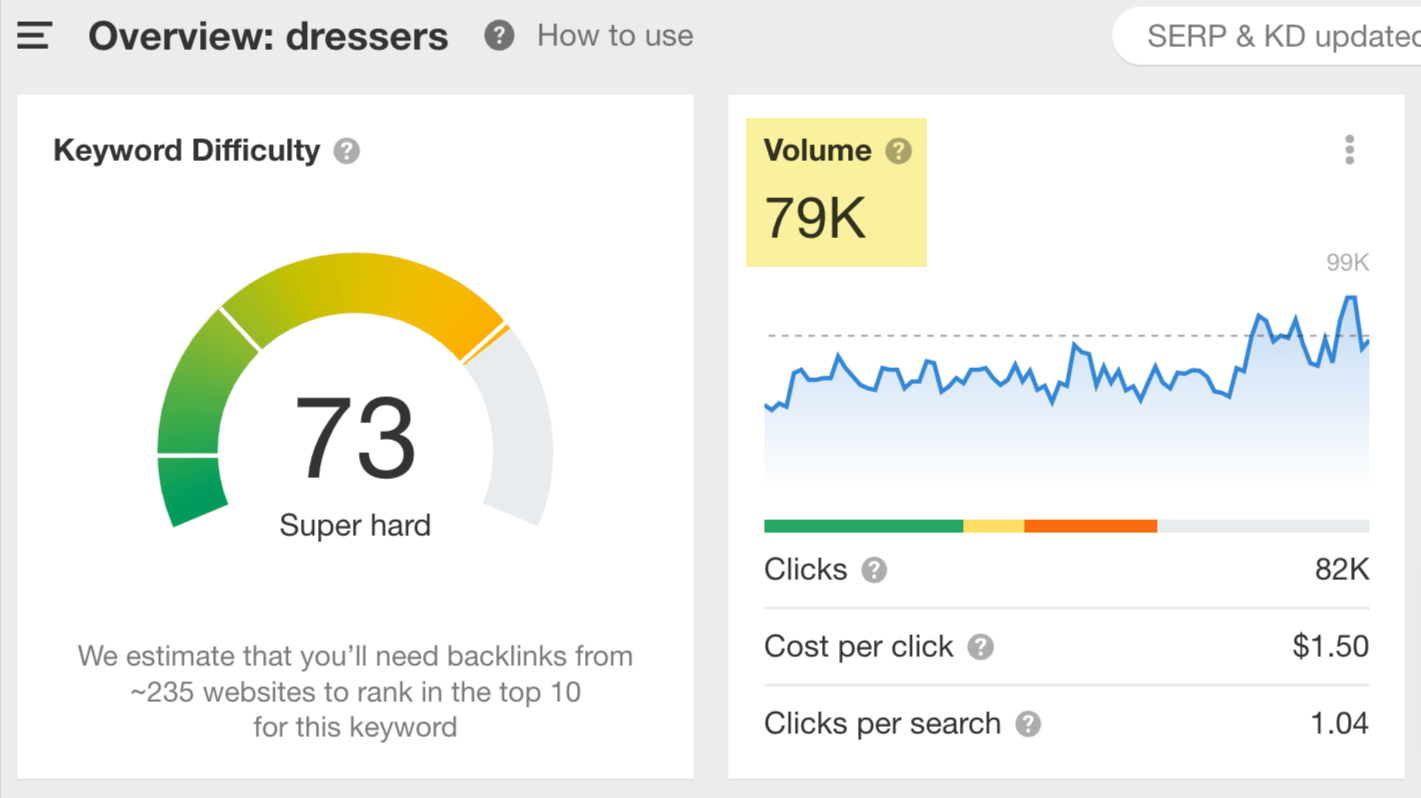
As you can see, despite having dramatically different search volumes, those keywords have virtually the same Keyword Difficulty (KD) scores. That’s one of the main reasons why using supporting long-tail keywords as primary keywords may not be the best idea.
So in most cases, you should probably avoid supporting long-tail keywords and focus instead on the other type: topical long-tail keywords.
Topical long-tail keywords
Topical long-tail keywords are the most popular way to look for a given topic. In other words, they are topics in themselves and not some other topics in disguise.
To tell if you’re dealing with topical or supporting long-tail keywords, you can do two things:
- Google the term and see what the top-ranking pages talk about
- Use the Parent Topic feature in Ahrefs’ Keywords Explorer – If the keyword is the same as the Parent Topic, you’re dealing with a topical keyword. Technically, the Parent Topic is the most popular keyword that the top-ranking page ranks for.
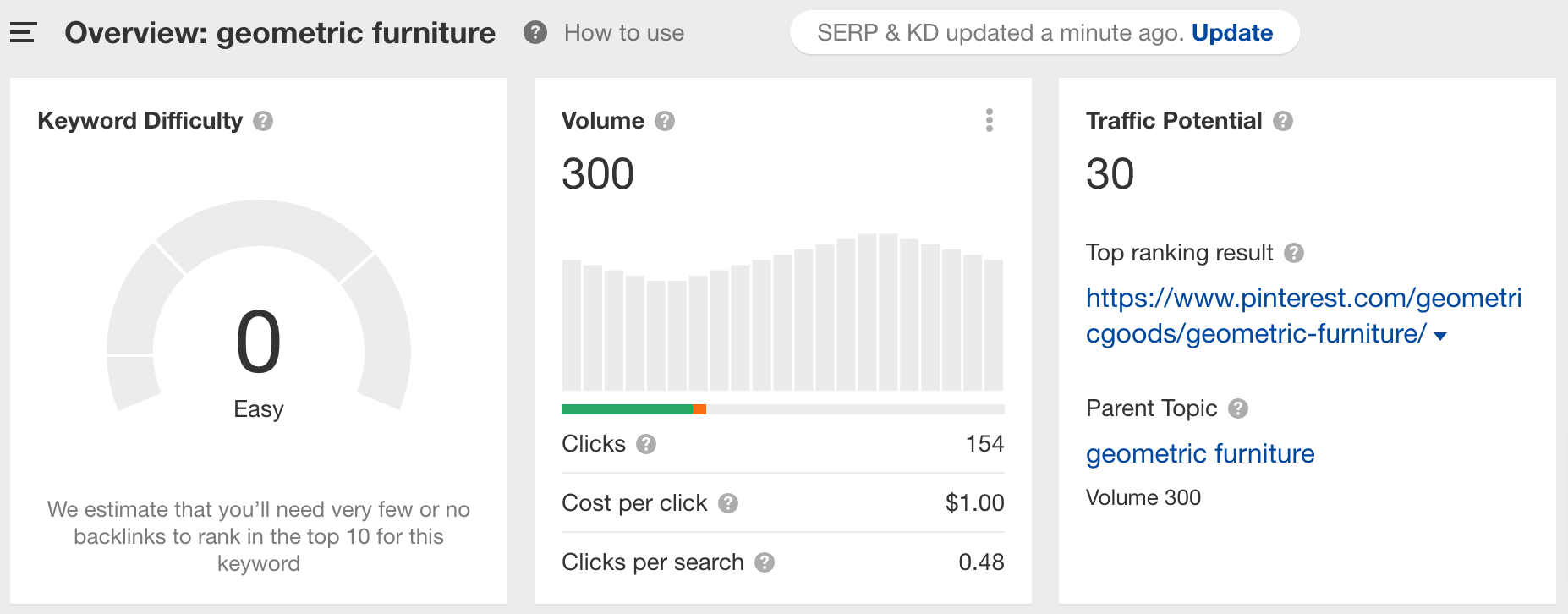
It’s good to know whether your keyword is topical. Because if you manage to rank for it, you’ll likely rank for the less popular supporting long-tail.


Learn more: Long-tail Keywords: What They Are and How to Get Search Traffic From Them
Both keyword types have their pros and cons.
Short-tail keywords will have a lot of competition, but it’s not impossible to outrank pages in the top 10.
It may take years (yes) of fine-tuning your content and years of building links.
But once you finally get there:
- You’ll get serious traffic from the head term and relevant long-tail keywords.
- Chances are you’ve amassed some good backlinks if you’re ranking high for these keywords. You can then use internal links from that page to boost other pages.

As for long-tail keywords, they’re great for other reasons. In most cases:
- They’re less competitive.
- There are lots of them.
- They are usually specific; you can attract visitors with specific intent.
On the flip side, you will need to rank for a lot of them to get a large volume of traffic. But as long as these keywords are good for your business, that traffic may be very valuable.
Case in point: left-handed nail scissors. Not many searches overall. But if you’re a shop for left-handed people like Lefty’s, customers will surely expect that product.
Bottom line? I’d say if you want to be the go-to resource for your topic, you may want to target both short- and long-tail keywords (see also: topical authority). Try to target topical long-tail keywords instead of supporting long-tail keywords, though.
If you take a keyword research tool like Ahrefs’ Keywords Explorer, type in something broad like “electric cars,” and sort the results by volume, you’ll get a list of keywords. The results at the top will be your short-tail keywords.
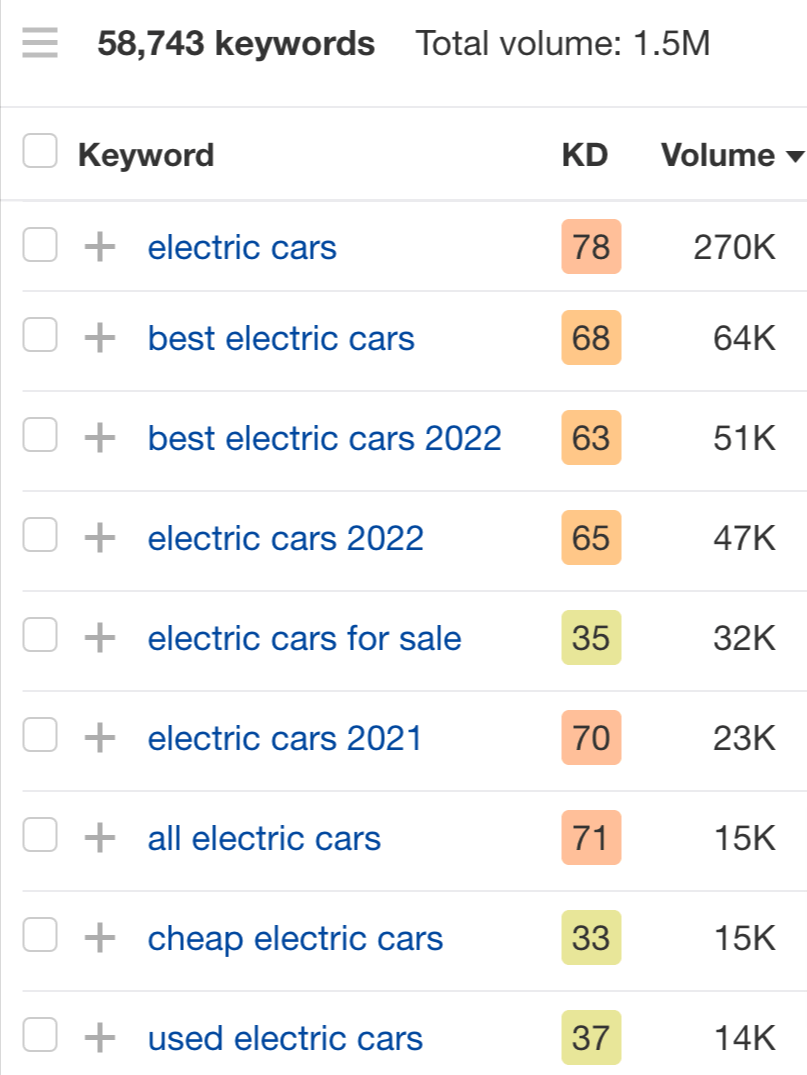
That’s it. If you don’t know what words to type in the tool, try:
- Looking at the topics people talk about on social media
- Taking some online industry magazines and look at often-featured topics
- Analyzing your competitors’ keywords (more on this in the next section)
- Using a research audience tool like SparkToro
Keyword research and competitive analysis tools can help you find long-tail keywords, too. You just need to set some filters. Let’s look at a couple of ways to do it.
Use a keyword research tool
In Keywords Explorer:
- Enter a broad topic
- Go to the Matching terms report
- Set the Volume and Traffic Potential filters to a maximum of 300
- Click Show results

Sidenote.
If you don’t see great results with these settings, set the volume and TP filters a bit higher. I don’t recommend going above a few hundred, though, as the results won’t be long-tails at that stage.
From there, refining your initial keyword list is a good idea. You can do that using the remaining filters inside the tool.
For example, you can use Keyword Difficulty (KD) to get only low-competition keywords, such as:
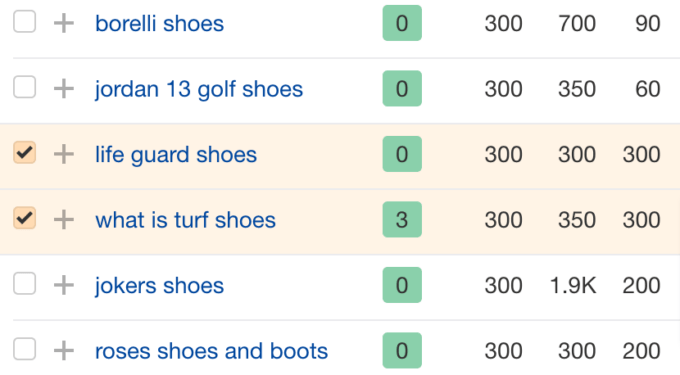
Or you can use modifier keywords, such as “for,” to let some niches emerge.

Some examples:

Of course, you can mix and match. Below is a filter that finds long-tail keywords posed as questions with low difficulty and minimum search volumes.

Examples:

Analyze competitors’ keywords
You can use a similar process to find good long-tail keywords among your competitors.
For this, use a tool like Ahrefs’ Site Explorer. You can:
- Enter any URL.
- Go to the Organic keywords report.
- Set the Volume to max 300 (Traffic Potential filter is unavailable here).
- Click Show results.

Sidenote.
If you don’t see great results with these settings, set the volume and TP filters a bit higher. I don’t recommend going above a few hundred, though, as the results won’t be long-tails at that stage.
Looking up the popular cooking website loveandlemons.com, we’ll get keywords such as:

Final thoughts
Probably the most important takeaway here is not to target keywords only because they belong to the long-tail or short-tail camp.
Instead, try this four-step process for finding keywords (we use it ourselves at Ahrefs):
- Find keywords with search traffic potential
- Make sure you create content that aligns with search intent
- Make sure the keyword has “business potential”
- Make sure you can rank for the keyword
Read all about the process in How to Choose the Right Keywords for SEO.
Got questions? Ping me on Twitter.
